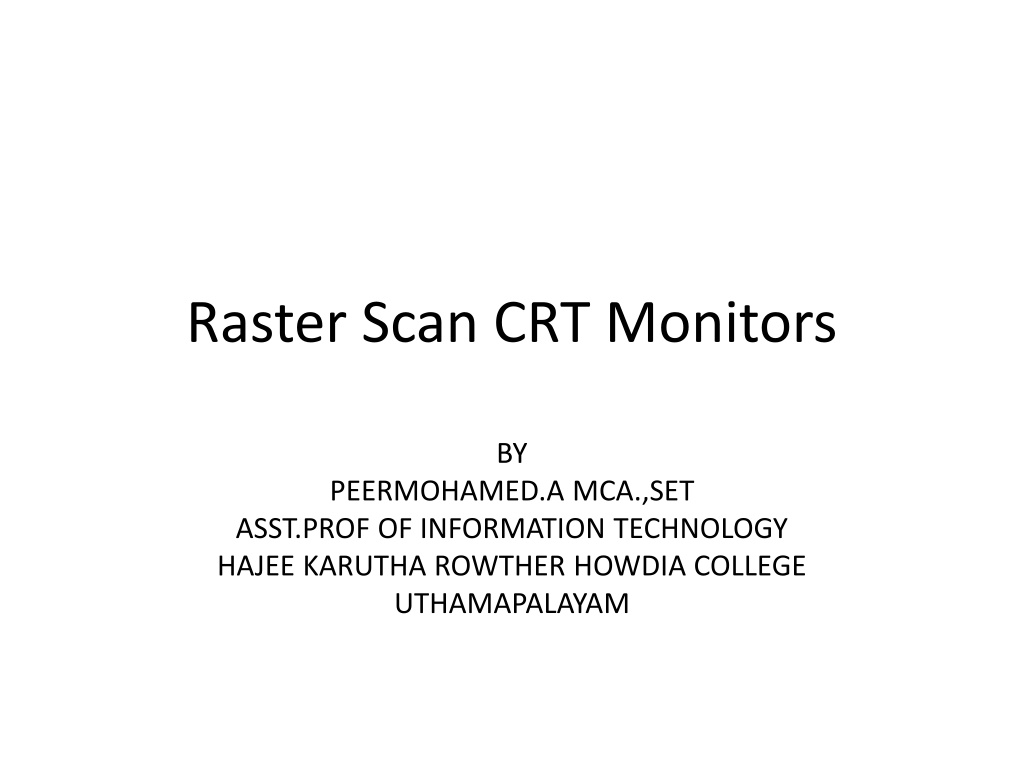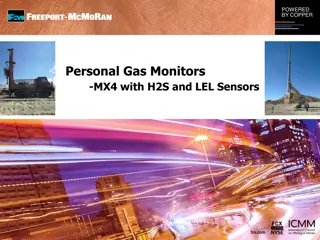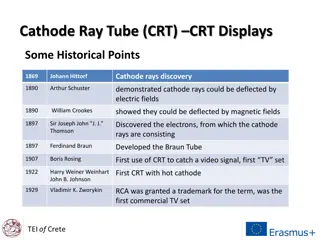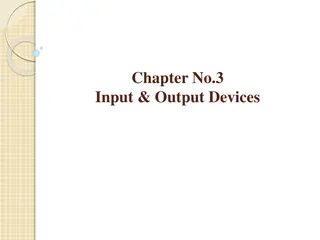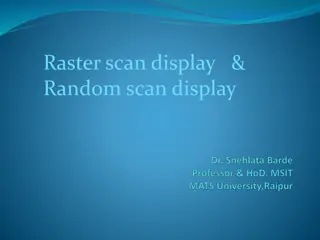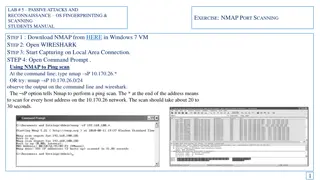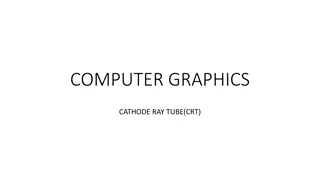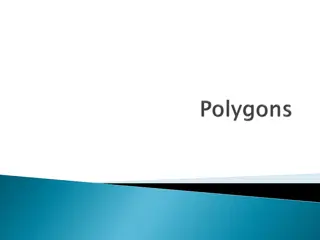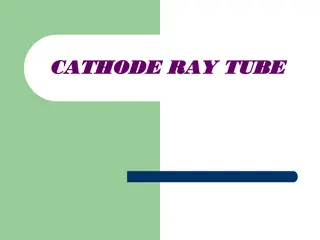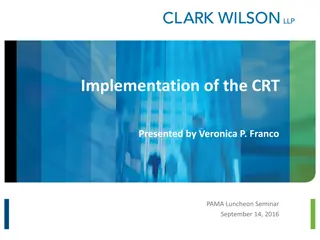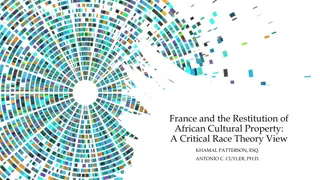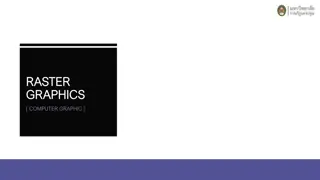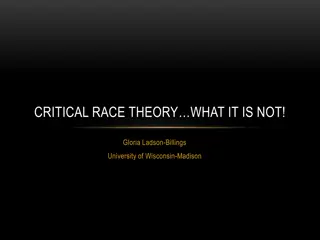Understanding Raster Scan CRT Monitors in Information Technology
Raster Scan CRT Monitors are a common graphical output device used in Information Technology. They consist of components like the electron gun, control electrodes, and phosphor-coated screen. The electron beam emitted uses electromagnetic fields to direct and focus on specific spots on the screen. The phosphor-coated spots glow with intensity proportional to the beam's intensity, exhibiting fluorescence and phosphorescence effects. The CRT is refreshed frequently to prevent flickering caused by the persistence of phosphorescence. Interlacing and overscan are techniques used to improve display quality on CRT monitors.
Download Presentation

Please find below an Image/Link to download the presentation.
The content on the website is provided AS IS for your information and personal use only. It may not be sold, licensed, or shared on other websites without obtaining consent from the author. Download presentation by click this link. If you encounter any issues during the download, it is possible that the publisher has removed the file from their server.
E N D
Presentation Transcript
Raster Scan CRT Monitors BY PEERMOHAMED.A MCA.,SET ASST.PROF OF INFORMATION TECHNOLOGY HAJEE KARUTHA ROWTHER HOWDIA COLLEGE UTHAMAPALAYAM
Raster Scan CRT Monitors It is the most common and widely used graphical output device. The major Components are: Electron Gun Control electrodes Focusing Electrodes Deflection Yoke Phosphor Coated screen
Contd.. Example of Raster scan display
Contd.. Configuration of CRT Monitors
Contd.. In CRT a beam of electrons, emitted from an electrode (called the cathode or electron gun), passes through a focusing and deflection system and then strike the phosphor-coated screen. Electromagnetic fields are used to direct and focus the beam to the particular spot on the screen. When beam strikes the phosphor coated spot, it glows with an intensity propotional to the beam intensity of the beam itself. The glow given off by the phosphor during exposure to the electron beam is called fluroscence. The containing glow given off after the beam is removed is called phosphorescence and its duration is known as persistence of phosphorescence. All phosphors have a limited life depending on time of exposure and intensity of the electron beam. After which they are burnt out.
Contd.. Due to persistence of phosphorescence the CRT is refreshed frequently(50/60 times /second). The image on the CRT may appear to flash rapidly on and off. This flashing is flicker. Fortunately, people cannot detect visual changes before 1/30 th of a second. This is called persistence of vision. It is due to this drawback of human visual system that TVs, movies, m onitors can satisfy our visual sense.
Contd.. Interlaced Non-interlaced Interlaced In Interlaced systems, the total number of even and odd fields. The electron beams scan them alternatively odd field followed by even field. Due to high vertical resolution of the system and non ability of human visual systems detect the separation between two close scan lines, it cannot sense the one of the fields skipped during the scan. In medium persistence phosphor, interlacing can reduce the flickering because the display is filled with 50 percentage of information approx. There are two types of CRT monitors: scan lines divided into
Contd.. Over scan The electron beam, during scanning, crosses the border of the visible screen and scans more along all four sides than that is actually needed. This is called over scan. Blanking During retrace from bottom-right to top-left corner of the screen the electron beam is off and actually screen is blank at that time. This event is called blanking.
Contd.. Spot size or Pixel size: This indicates the resolution Small spot means high resolution. This depends on the cross section of electron beam and size of phosphor crystals on the screen. For colour monitor generally 3 dots are used to constitute a pixel. For Grey image , generally pixels are formed of a number of dots which is power of two.
Contd.. Aspect Ratio It is the device s width-height ratio. Most standard CRTs have a display area with aspect ratio of 4:3. In 14 monitor the width and height are 12 and 9 respectively. The aspect ratio can be also e defined as the number of horizontal pixel is equal to the number of vertical pixel necessary to produce equal length line. Our visual system is more sensitive to detect colour or intensity changes horizontally than vertically.
Contd.. Resolution It is number of pixels per unit length on a scan line. Generally it is indicated by the no. of pixels. It can horizontal or vertical. Resolution of 640*400 means 640pixels/horizontal & 400pixels /vertical.
